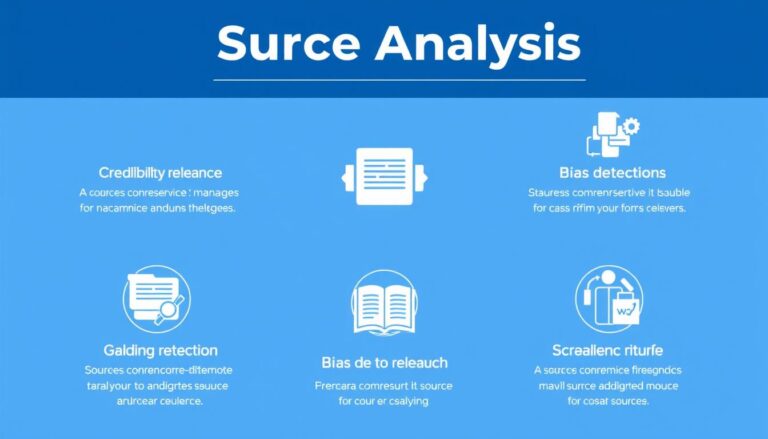A summary of contents is a crucial element in understanding the structure and key concepts of a publication. It serves as a guide, helping readers navigate the material and identify the most relevant information.
By providing an overview of the key elements, readers can gain a deeper understanding of the subject matter and appreciate the author’s intent. This introduction sets the stage for exploring the importance of a well-crafted summary and its benefits for readers.
Key Takeaways
- Understanding the purpose of a summary of contents.
- Identifying the key elements of a publication.
- Recognising the benefits of a well-structured summary.
- Appreciating the importance of a clear and concise summary.
- Gaining insights into the author’s intent and purpose.
The Purpose and Value of Book Overviews
The significance of book overviews cannot be overstated, as they offer a snapshot of a book’s key concepts and structure. A well-written book overview provides readers with a concise understanding of what to expect from the book, making it an indispensable tool for both authors and readers.
Definition and Function in the Literary World
In the literary world, a book overview serves as a crucial element in promoting a book and attracting potential readers. It is a brief summary that highlights the main themes, plot, and key concepts of the book. The primary function of a book overview is to inform and entice readers, encouraging them to engage with the book. For academic book intros, this involves providing a clear overview of the research, arguments, and conclusions presented in the book.
How Overviews Differ from Summaries and Reviews
While often confused with summaries or reviews, a book overview has its unique characteristics. Unlike a summary, which might delve deeper into the plot or details, a book overview provides a broader perspective, focusing on the overall content and significance. A review, on the other hand, includes a critical evaluation of the book, whereas an overview remains neutral, aiming to inform rather than critique.
Understanding these differences is essential for authors, publishers, and readers to effectively utilize book overviews in promoting and understanding literary works.
Essential Elements of a Compelling Book Overview
An effective book overview is the key to unlocking the full potential of a book, making it appealing to its intended audience. It serves as a crucial tool for readers, publishers, and literary agents to understand the core themes, structure, and value of a literary work.

Core Components That Readers Expect
A compelling book overview should include several core components that readers expect. These include:
- A clear and concise summary of the book’s content
- An overview of the book’s structure and key themes
- Information about the target audience and how the book caters to their needs
Balancing Detail and Brevity
One of the most challenging aspects of writing a book overview is striking the right balance between detail and brevity. It is essential to provide enough information to pique the reader’s interest without revealing too much or being too vague.
Australian Publishing Standards for Overviews
In Australia, publishing standards for book overviews emphasize the importance of clarity, accuracy, and relevance. A well-crafted summary of contents should adhere to these standards, ensuring that the overview is both informative and engaging for the target audience.
By focusing on these essential elements, writers and publishers can create compelling book overviews that capture the essence of a literary work and appeal to readers in Australia and beyond.
Capturing and Communicating Key Concepts
A well-written book overview requires a deep understanding of the book’s core concepts and the ability to convey them clearly. This involves a nuanced approach to identifying and articulating the central themes and ideas that drive the narrative.
Techniques for Identifying Central Themes
To identify the central themes of a book, one must carefully analyze the text, looking for recurring motifs, character arcs, and plot developments that reveal the author’s underlying message. This process can be facilitated by asking key questions about the book’s structure and content.
- What are the main plot points and how do they relate to the overall narrative?
- How do the characters evolve throughout the story, and what does this reveal about the author’s themes?
- Are there any recurring symbols or motifs that carry significant meaning?
Articulating Complex Ideas in Accessible Language
Once the central themes are identified, the next challenge is to articulate them in a way that is accessible to potential readers. This requires using clear, concise language that avoids jargon and overly technical terms unless they are intrinsic to the book’s subject matter.
For example, when describing a complex academic text, it’s essential to break down the main arguments into digestible components without losing the essence of the author’s intent.
Maintaining the Author’s Original Intent
Maintaining the author’s original intent is crucial when crafting a book overview. This involves being faithful to the author’s tone, perspective, and message, ensuring that the overview accurately represents the book’s content and themes.
| Key Elements | Description | Importance |
|---|---|---|
| Central Themes | Main ideas or messages conveyed by the author | High |
| Accessible Language | Clear and concise language used to describe complex ideas | High |
| Author’s Intent | Faithfulness to the author’s tone, perspective, and message | Critical |
By focusing on these key elements, a book overview can effectively capture and communicate the key concepts of a book, enticing readers and providing them with a clear understanding of what to expect.
Breaking Down and Presenting Book Structure
A well-presented book structure helps readers navigate through the content with ease. It provides a clear overview of how the book is organised, making it simpler for readers to understand the flow of the narrative.
Mapping Chapter Organisation and Flow
Mapping the chapter organisation involves breaking down the book into its core components. This includes identifying the introduction, main body, and conclusion, as well as understanding how each chapter contributes to the overall narrative. By doing so, readers can gain insights into the author’s approach and the book’s overall structure.
To effectively map chapter organisation, one can create a chapter outline. This outline should highlight key themes, plot developments, and character introductions. It serves as a roadmap, allowing readers to see how the story unfolds.
Highlighting Structural Elements That Support the Narrative
Structural elements such as prologues, epilogues, and transitions between chapters play a crucial role in supporting the narrative. These elements can provide context, deepen understanding, and enhance the overall reading experience.
By highlighting these structural elements, readers can better appreciate the author’s craft. For instance, a prologue might set the tone for the entire book, while an epilogue might provide closure.
Visual Representations of Book Structure
Visual representations, such as diagrams or infographics, can be incredibly effective in illustrating a book’s structure. These visual tools can help readers quickly grasp the organisation and flow of the content.

For example, a diagram showing the progression of chapters can help identify key turning points in the narrative. This can be particularly useful for complex books with multiple plot threads.
| Structural Element | Description | Impact on Narrative |
|---|---|---|
| Prologue | Sets the tone and provides background | Establishes context for the story |
| Chapter Transitions | Links between chapters | Maintains narrative flow |
| Epilogue | Provides closure | Concludes the story |
Defining and Describing the Intended Audience
When writing an academic book intro, identifying the target audience is essential. Understanding who the book is for helps authors tailor their content, tone, and language to effectively engage their readers.
Recognising Author Signals About Target Readers
Authors often provide signals about their intended audience through the language, tone, and content of their writing. By paying attention to these signals, readers can better understand who the book is for. For instance, a book with technical terminology and complex concepts may be intended for specialists in the field, while a book with a more general tone may be aimed at a broader audience. To identify these signals, readers can look for contextual clues such as the author’s use of jargon or the level of explanation provided for key concepts.
Explaining Who Would Benefit Most from the Book
Once the intended audience is identified, it’s essential to explain who would benefit most from the book. This involves analyzing the book’s content, themes, and purpose to determine which readers will gain the most value from it. For example, a book on writing for a specific audience may be particularly useful for students or professionals in the field.
Australian Reading Demographics and Preferences
Australia has a diverse reading population with varying preferences and demographics. Understanding these factors can help authors and publishers tailor their content to meet the needs of their target audience. According to recent data, Australian readers tend to prefer books that reflect their cultural experiences and values. Authors who can tap into these preferences are more likely to resonate with their audience.
Writing a Book Overview for Academic and Educational Contexts
The art of writing a book overview for academic and educational contexts involves distilling intricate concepts into clear, concise language. This task requires a deep understanding of the subject matter, as well as the ability to convey complex ideas in an accessible manner.
Meeting Scholarly Standards in Australian Academia
In Australian academic circles, scholarly standards are paramount. A book overview must adhere to these standards by being rigorous, well-researched, and free of bias. This involves a thorough understanding of the academic context and the expectations of the scholarly community.
Key considerations include:
- Adherence to academic writing conventions
- Use of relevant scholarly literature
- Avoidance of colloquial language
Incorporating Critical Analysis Elements
Critical analysis is a crucial component of academic writing. When crafting a book overview, it’s essential to incorporate elements of critical analysis, such as evaluating the methodology and evidence presented in the book.
Evaluating Methodology and Evidence
A critical evaluation of the book’s methodology and evidence is vital. This involves assessing the strengths and limitations of the research and its contribution to the field.
Contextualising Within Broader Literature
Placing the book within the broader context of existing literature is also important. This helps to highlight its significance and relevance to current scholarly debates.
| Aspect | Description | Importance |
|---|---|---|
| Methodology | Research methods used | High |
| Evidence | Data and findings | High |
| Literature Context | Relation to existing research | Medium |
By following these guidelines and incorporating critical analysis, a book overview can effectively convey the significance and relevance of the book to the academic community.
Crafting Book Overviews for Different Platforms and Purposes
Book overviews are not one-size-fits-all; they must be tailored to specific purposes and audiences. The way a book is presented can significantly impact its reception and success.
Tailoring Content for Publishers and Literary Agents
When creating a book overview for publishers and literary agents, the focus should be on the marketability and commercial viability of the book. This involves highlighting the unique selling points, target audience, and how it compares to other books in the same genre.
Creating Engaging Overviews for Online Bookstores
For online bookstores, the overview needs to be engaging and concise, capturing the reader’s attention within a few seconds. It should include relevant keywords to improve discoverability and entice potential readers with a compelling summary.
Developing Educational Overviews for Students and Teachers
Educational overviews require a different approach, focusing on the educational value, relevance to curricula, and how the book can be used as a teaching tool. This involves understanding the needs of educators and students.
Australian Book Industry Requirements
The Australian book industry has its own set of requirements and standards for book overviews. Understanding these requirements is crucial for authors and publishers aiming to succeed in this market.
| Platform | Key Focus | Target Audience |
|---|---|---|
| Publishers/Literary Agents | Marketability, Commercial Viability | Industry Professionals |
| Online Bookstores | Engagement, Discoverability | General Readers |
| Educational Institutions | Educational Value, Curriculum Relevance | Students, Teachers |
By tailoring the book overview to the specific platform and purpose, authors and publishers can increase the book’s visibility and appeal to the target audience.
Common Pitfalls in Book Overview Writing
When writing a book overview, it’s crucial to avoid common pitfalls that can mislead or deter potential readers. A well-crafted overview should provide a clear summary of contents without revealing too much or misrepresenting the author’s intent.
Revealing Too Many Plot Points or Spoilers
One of the most significant pitfalls is giving away too many plot details, which can spoil the reading experience for potential readers. It’s essential to strike a balance between providing enough information to pique interest and withholding enough to keep the reader curious.
Injecting Personal Bias Without Acknowledgement
Another common mistake is injecting personal bias into the overview without acknowledging it. This can lead to a skewed representation of the book’s content and may deter readers who disagree with the biased perspective.
Misrepresenting the Author’s Intent or Message
Misrepresenting the author’s intent or message can be damaging, as it may lead readers to expect something different from the book. It’s crucial to understand and accurately convey the author’s purpose.
Overlooking Cultural Context and Sensitivities
Overlooking cultural context and sensitivities can result in a poorly received overview. It’s vital to be aware of the cultural nuances and ensure that the overview is respectful and accurate.
By being aware of these common pitfalls, writers can craft book overviews that are both informative and engaging, providing readers with a compelling summary of contents that encourages them to read the book.
Practical Tools and Resources for Book Overview Creation
Effective book overview creation relies on accessing the right digital tools and literary communities. Writers can significantly enhance their work by leveraging these resources.
Digital Tools for Organisation and Analysis
Several digital tools can aid in organising and analysing the content of a book. Tools like Scrivener and Trello help writers organise their thoughts and structure their overviews efficiently. For analysis, tools such as Grammarly ensure that the overview is free of grammatical errors and is polished.
Templates and Frameworks for Different Overview Types
Using templates and frameworks can streamline the process of creating book overviews. Templates provide a structured format, while frameworks offer a conceptual structure for different types of overviews. For instance, an academic book intro might require a different framework compared to a fiction book overview.
Australian Literary Resources and Communities
Australia has a rich literary landscape with numerous resources available for writers. The Australian Writers’ Centre and Writing Australia are valuable communities that offer support, workshops, and resources for writers looking to craft compelling book overviews.
By utilising these practical tools and resources, writers can produce high-quality book overviews that capture the essence of their work.
Conclusion: Perfecting Your Book Overview Skills
Crafting a compelling book overview is a valuable skill for authors, publishers, and educators. By understanding the essential elements of a book overview, including the summary of contents, you can effectively communicate the value of a book to your target audience.
A well-written book overview can capture the essence of an academic book intro, conveying complex ideas in an accessible manner. By applying the techniques outlined in this article, you can perfect your book overview skills and enhance your ability to engage your readers.
Whether you’re an author seeking to promote your work or an educator looking to introduce students to new texts, a high-quality book overview is an indispensable tool. By mastering this skill, you can make a meaningful impact in the literary world and contribute to a deeper understanding of the books that shape our culture.





